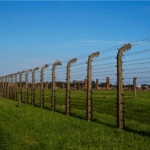Refreshing your home with a new coat of paint can completely transform its appearance and vibe. Whether you’re preparing to sell, making a new house feel like home, or simply giving your living space a fresh update, painting is one of the most cost-effective ways to breathe new life into a property. But just how much does it cost to paint a house?
This guide uncovers the key factors that affect painting costs, provides average price ranges for both interior and exterior projects, and offers some handy tips to save on your next paint job.
Factors That Affect House Painting Costs
Several factors can impact how much you’ll spend on a house painting project. Here’s what plays the biggest role:
Size of the Home
The size of your home directly impacts the overall cost of a painting project. Larger homes require more paint, additional labor, and more time to complete. Multi-story houses often cost even more because painters need extra equipment, such as ladders, scaffolding, or lifts, to safely access higher areas. The complexity of the home’s design, such as intricate architecture or varied surfaces, can also influence the cost.
Condition of Existing Paint
The current condition of your home’s paint plays a significant role in determining the preparation work required. If your house has peeling, cracked, or damaged paint, additional steps like scraping, sanding, power washing, or even priming will be necessary before the actual painting begins. These prep tasks can significantly increase the labor cost and time needed for the project but are crucial for ensuring a smooth and professional finish.
Number of Coats
The number of coats applied is another key factor. Applying two coats of paint instead of one not only improves durability and ensures better coverage but also results in a more vibrant and uniform finish. However, this comes at a cost—typically increasing the overall expense by about 25%. Some surfaces, especially darker walls being painted a lighter color, may even require three coats for complete coverage.
Paint Quality
The quality of the paint you choose greatly affects both the upfront costs and the long-term savings. High-quality paints typically last longer, adhere better, and provide a smoother, more attractive finish. While premium paints may cost anywhere from $20 to over $100 per gallon, they reduce the need for frequent repainting, making them a cost-effective investment over time. Lower-quality paints may seem budget-friendly but often require more coats and fade or chip faster, leading to additional expenses down the line.
Labor Costs
Labor costs are one of the largest components of a painting project and can vary greatly based on your location and the expertise of the painters you hire. Professional painters may charge by the hour or per square foot, with rates depending on their experience, the complexity of the project, and the region. Highly skilled painters generally command higher rates but often deliver superior craftsmanship, making it worth the investment for a flawless result. Some painters also include cleanup and minor touch-ups in their pricing, which can save you time and effort.
Geographic Location
Where you live also plays a significant role in determining the overall cost of your painting project. Prices tend to be higher in metropolitan cities like Sydney, where the cost of living and demand for services are elevated. On the other hand, smaller cities or rural areas, such as Adelaide or Brisbane, may have lower labor and material costs. Climate also matters—homes in humid or coastal regions may require specialized paint or additional protective coatings, adding to the expense.
Additional Features and Repairs
Additional features and repairs can further increase the overall cost. Painting details such as window trims, shutters, doors, baseboards, or crown molding often incur extra charges, as they require more precision and time. Similarly, any repairs needed before painting—such as filling cracks, replacing damaged wood, or addressing water stains—will add to the labor and material costs. Homes with unique architectural features or textured surfaces, like brick or stucco, may also require specialized tools and techniques, raising the total price.
Choosing the Right Approach
When planning your painting project, understanding these factors can help you budget effectively and make informed decisions. Investing in proper prep work, high-quality paint, and experienced professionals can ensure a beautiful, long-lasting finish that increases your home’s appeal and value.
How Much Does Interior Painting Cost?
Painting the interior of your house is a great way to refresh your space and give it a clean, updated look. Whether you’re looking to add a splash of color or simply brighten up your walls, understanding the costs involved can help you budget effectively. Here’s a detailed breakdown of what you need to know:
Cost Per Square Foot
Interior painting typically costs between $2 and $6 per square foot, which includes both labor and materials. The final price depends on factors like the type of paint, the condition of the walls, and the complexity of the job. For example, textured walls or intricate designs may drive up the cost.
Cost to Paint a Single Room
For a standard 10×12-foot room, the cost of painting just the walls typically runs around $400. However, if you want to include ceilings, baseboards, trims, and doors, the price can climb to $800 or more. The use of premium paints or custom colors could also increase the overall expense.
Cost for an Average-Sized Home
For an average 2,000-square-foot home, interior painting costs generally range between $4,000 and $10,000. This depends on the quality of the paint used, the number of rooms being painted, and whether any additional surfaces like ceilings or trim are included. Larger houses or homes with vaulted ceilings and detailed woodwork may cost more.
Additional Costs
Prep work is a significant factor that can add to the total cost. If your walls require extensive preparation, such as repairing drywall, filling in holes, or addressing water damage, you’ll likely face additional fees. This work is essential to achieving a smooth, long-lasting finish, so it’s worth discussing these potential extras upfront with your painter. Similarly, removing old wallpaper or heavy stains can also add time and cost to the project.
Tips for Budgeting
To save on costs, consider painting multiple rooms at once, as painters often offer discounts for larger jobs. You can also choose mid-range paints that balance quality and price effectively. Always ask for multiple quotes and be sure to review the painter’s portfolio or references to ensure you’re hiring a reliable professional.
Investing in interior painting not only improves your home’s aesthetic appeal but can also increase its overall value. With proper planning and budgeting, you can achieve a stunning look that enhances your space without unnecessary stress.
How Much Does Exterior Painting Cost?
Exterior painting not only enhances your home’s curb appeal but also provides essential protection against weather and environmental damage. Investing in a fresh coat of paint can prolong the life of your home’s exterior while keeping it looking vibrant and well-maintained. Here’s a detailed breakdown of costs to help you budget for your project:
Cost Per Square Foot
On average, homeowners spend between $15 and $25 per square meter for exterior painting. The exact price depends on factors like the type of paint used, the complexity of the work, and the condition of the existing surface. Premium paints or specialty finishes may increase the cost, but they also offer better durability and weather resistance.
Factors Influencing Exterior Costs
Several factors can impact the overall cost of your exterior painting project. These include:
- Material of the exterior: Surfaces like wood, brick, or stucco require different preparation and paint types, which can influence labor and material costs.
- Accessibility: Homes with hard-to-reach areas or tight spaces may require more time and effort to paint, leading to higher charges.
- Height of the home: Single-story homes are generally less expensive to paint than multi-story homes, as taller structures require additional safety equipment, scaffolding, and labor.
- Condition of the exterior: If your home’s exterior is damaged, peeling, or requires extensive prep work such as scraping or priming, this can increase costs significantly.
Example Costs for a Three-Bedroom Home
For a standard three-bedroom, single-story house, exterior painting typically costs $4,000 to $20,000, depending on size, condition, and accessibility. Larger homes or those with intricate details may reach the higher end. For double-story homes, costs can exceed $25,000 due to added equipment, labor, and time.
To repaint your home, consult professional painters for a detailed quote. They can assess your needs and recommend the best materials and finishes for lasting results. Quality exterior painting protects your home and adds value to your property.
Combined Interior and Exterior Painting Costs
Combining both interior and exterior painting projects can maximize efficiency and often lead to cost savings.
Cost for Whole Home Painting
Painting a 2,500-square-foot home typically costs $10,000 to $17,000, depending on materials, project complexity, and contractor rates. Smaller homes may cost as little as $4,500, while larger homes or projects needing extensive prep work, like repairs or multiple coats, can go over $30,000.
Discounts for Whole Home Projects
Many painters offer discounts for bundling interior and exterior jobs, which can lower costs. Be sure to ask about package deals or promotions when getting quotes. Some contractors also provide seasonal discounts during slower periods, so timing your project can help save money.
Painting Costs in Australia
In Australia, painting costs depend on your city, home size, and project details. Labor rates vary by region, with larger cities often costing more due to higher demand. The type of paint—premium or standard—also impacts the price. Compare multiple quotes to find the best mix of quality and affordability.
| City | 1-Bedroom Home | 2-Bedroom Home | 3-Bedroom Home | Single-Story Exterior | Double-Story Exterior |
| Sydney | $2,500 | $3,000 | $3,600 | $15,000 – $20,000 | $25,000 – $35,000 |
| Melbourne | $2,600 | $3,200 | $3,800 | $8,000 – $20,000 | $20,000+ |
| Brisbane | $2,400 | $2,900 | $3,500 | $7,000 – $15,000 | $15,000+ |
Note: Prices may vary depending on house condition, accessibility, and additional features.

How to Save Money on House Painting
A fresh coat of paint doesn’t have to break the bank. With a little planning and effort, you can save significantly while still achieving professional-looking results. Here are some tips to help you cut down on expenses:
Choose Affordable Paints
You don’t need to buy the most expensive paint for great results. Many mid-tier options offer durability, vibrant colors, and good coverage at a lower cost. Check reviews or ask a store associate to find the best value for your budget.
Look for Deals
Watch for discounts, promotions, or clearance sales on paint and supplies. Many stores and online retailers offer seasonal sales or bulk discounts on items like brushes, rollers, and painter’s tape. Planning your project around these deals can save you money.
Get Multiple Quotes
If you’re hiring professionals, don’t settle for the first quote. Contact at least three painters or contractors to compare pricing, services, and timelines. This helps you find the best deal and avoid hidden fees.
With these tips, you can refresh your space without overspending. Happy painting!
DIY Painting for Beginners
If you’re considering painting the house yourself, follow these simple steps for success:
- Gather Supplies: Get quality brushes, rollers, drop cloths, and painter’s tape for a professional finish. Choose the right paint for your surface, whether it’s walls, furniture, or outdoor spaces. Having your tools ready beforehand saves time and frustration.
- Prep Surfaces: Proper preparation is key. Sand rough areas, clean off dirt and dust, and fill cracks or holes with sparkles. Use primer if painting over dark colors or porous surfaces to improve adhesion and color.
- Apply Paint in Layers: Start with a thin, even coat using steady strokes. Don’t overload your brush or roller to avoid drips. Let each coat dry fully before adding more for a smooth, streak-free finish.
- Ensure Safety: Stay safe by using stable ladders and wearing gloves, goggles, and a mask if fumes are strong. Keep the area well-ventilated, especially when painting indoors.
Refresh Your Home with Confidence
Painting your house has the power to elevate its aesthetics, increase its value, and protect surfaces from wear and tear. By understanding the costs involved and following the tips outlined in this guide, you can plan your project effectively and stick to your budget.
Whether you choose to DIY or hire a professional, a well-executed paint job is a worthwhile investment. For tailored quotes and expert advice, contact trusted local painters today.
FAQ
Q: How often should I repaint the exterior of my house?
A: The frequency of repainting depends on factors such as climate, the quality of the previous paint, and the material of your home’s exterior. On average, homes should be repainted every 5-10 years.
Q: What factors influence the cost of a painting project?
A: The cost can be affected by the size of your property, the type and quality of paint, the condition of the surfaces, and whether you hire professionals or undertake a DIY project.
Q: Is it better to hire a professional painter or do it myself?
A: This depends on your experience, time availability, and the scope of the project. Professional painters bring expertise and efficiency, while DIY can save on labor costs if you’re confident in your skills.
Q: What type of paint is best for exterior surfaces?
A: Acrylic latex paint is a popular choice due to its durability, flexibility, and ability to withstand weather conditions. Ensure you choose a high-quality paint suited for your specific surface type.
Q: How can I maximize the lifespan of a new paint job?
A: Proper preparation, using high-quality paint, and regular maintenance such as cleaning and addressing small repairs quickly can help prolong the paint’s lifespan.









